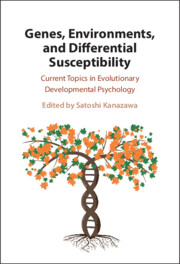 Genes, Environments, and Differential Susceptibility
Genes, Environments, and Differential Susceptibility Book contents
- Genes, Environments, and Differential Susceptibility
- Genes, Environments, and Differential Susceptibility
- Copyright page
- Contents
- Figures
- Tables
- Contributors
- Introduction
- Part I Historical Background and Theoretical Foundations of Jay Belsky’s Work in Evolutionary Developmental Psychology
- Part II Parent–Child Relations and Attachment
- Chapter 4 Evolutionary Lifespan Models of Attachment and Reproductive Strategies
- Chapter 5 Stability and Change in Attachment from Preschool to Adolescence
- Chapter 6 The Legacy of the Determinants of Parenting Process Model
- Part III Life-Course Development from Prenatal Environment through Childhood to Adulthood
- Part IV Differential Susceptibility to Environmental Influences
- Conclusion
- Afterword
- Biography of Jay Belsky
- Index
- References
Chapter 5 - Stability and Change in Attachment from Preschool to Adolescence
from Part II - Parent–Child Relations and Attachment
Published online by Cambridge University Press: 04 September 2025
- Genes, Environments, and Differential Susceptibility
- Genes, Environments, and Differential Susceptibility
- Copyright page
- Contents
- Figures
- Tables
- Contributors
- Introduction
- Part I Historical Background and Theoretical Foundations of Jay Belsky’s Work in Evolutionary Developmental Psychology
- Part II Parent–Child Relations and Attachment
- Chapter 4 Evolutionary Lifespan Models of Attachment and Reproductive Strategies
- Chapter 5 Stability and Change in Attachment from Preschool to Adolescence
- Chapter 6 The Legacy of the Determinants of Parenting Process Model
- Part III Life-Course Development from Prenatal Environment through Childhood to Adulthood
- Part IV Differential Susceptibility to Environmental Influences
- Conclusion
- Afterword
- Biography of Jay Belsky
- Index
- References
Summary
Our understanding of the stability in attachment during the first two decades of life is limited because i) ambiguity concerning the term ‘stability’ and ii) children have not been repeatedly followed up, leaving how attachment develops from childhood to adolescence uncharted. A birth cohort sample from Norway (n = 952) was examined with observational measures of attachment at ages 4, 6, 10, 12, 14, and 16 years to provide data on four aspects of stability: i) stability at the group level: avoidant and disorganized attachment decreased throughout development; ii) stability relative to the group increased with increasing age; secure attachment at ages 4 and 6 was weakly correlated with attachment in adolescence; other attachment strategies evinced no stability; iii) stability relative to oneself followed the above correlational pattern, but two latent classes both best described the individual trajectories of secure and ambivalent attachment; iv) stability of changes: changes in attachment styles from 4 to 6 did not forecast level or change in attachment in adolescence. Finally, I found little support for an early-formed prototype being responsible for stability. In sum, there was little continuity in attachment from childhood to adolescence, and the development in security and ambivalence might both follow two different trajectories.
Information
- Type
- Chapter
- Information
- Genes, Environments, and Differential SusceptibilityCurrent Topics in Evolutionary Developmental Psychology, pp. 100 - 133Publisher: Cambridge University PressPrint publication year: 2025
References
Accessibility standard: WCAG 2.0 A
Content Navigation
Allows you to navigate directly to chapters, sections, or non‐text items through a linked table of contents, reducing the need for extensive scrolling.
Provides an interactive index, letting you go straight to where a term or subject appears in the text without manual searching.
Reading Order & Textual Equivalents
You will encounter all content (including footnotes, captions, etc.) in a clear, sequential flow, making it easier to follow with assistive tools like screen readers.
You get concise descriptions (for images, charts, or media clips), ensuring you do not miss crucial information when visual or audio elements are not accessible.
You get more than just short alt text: you have comprehensive text equivalents, transcripts, captions, or audio descriptions for substantial non‐text content, which is especially helpful for complex visuals or multimedia.
Visual Accessibility
You will still understand key ideas or prompts without relying solely on colour, which is especially helpful if you have colour vision deficiencies.
You benefit from high‐contrast text, which improves legibility if you have low vision or if you are reading in less‐than‐ideal lighting conditions.